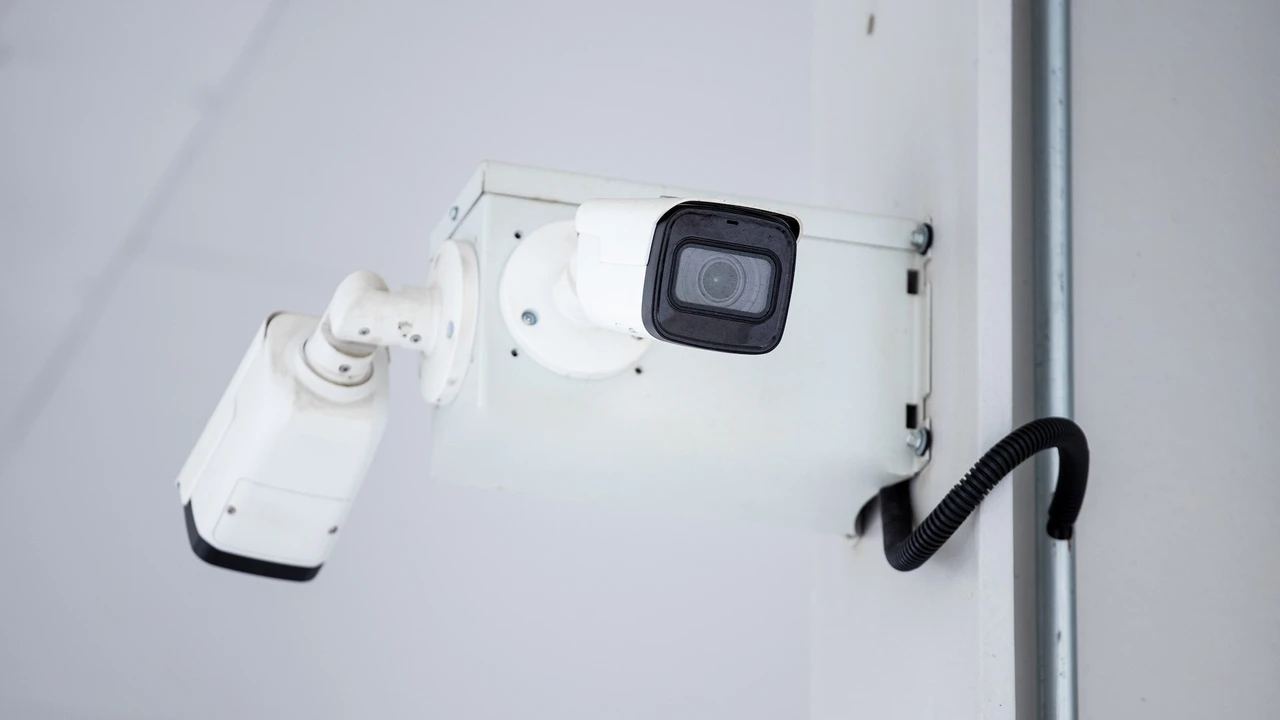Access Control Systems with Mobile Credentials
Explore access control systems that utilize mobile credentials for convenient and secure entry using smartphones.

Access Control Systems with Mobile Credentials
The Rise of Mobile Credentials in Access Control
Hey there! Let's talk about something super cool and convenient that's changing how we get into places: mobile credentials. Remember those days of fumbling for your key card or trying to remember a complex PIN? Well, those days are quickly becoming a thing of the past, thanks to our trusty smartphones. Mobile credentials basically turn your phone into your access key, letting you unlock doors, gates, and even turnstiles with just a tap or a wave. It's not just about convenience, though; it's also about boosting security and making life a whole lot easier for everyone involved, from employees to visitors.
Think about it: almost everyone carries a smartphone these days. So, why not leverage that device for access control? This technology is gaining serious traction in various sectors, from corporate offices and educational institutions to residential buildings and healthcare facilities. The beauty of it lies in its flexibility and the enhanced security features it brings to the table. We're talking about encrypted communication, multi-factor authentication, and the ability to revoke access instantly, all from a central management system. Pretty neat, right?
How Mobile Credential Access Control Works
So, how does this magic happen? At its core, mobile credential access control relies on a few key technologies. The most common ones you'll hear about are Bluetooth Low Energy (BLE) and Near Field Communication (NFC). Both allow your smartphone to communicate with a compatible reader at an access point.
Bluetooth Low Energy BLE for Seamless Entry
BLE is fantastic for its range and flexibility. With BLE, you can often unlock a door without even taking your phone out of your pocket or bag. Imagine walking up to an office door, and it just unlocks as you approach – that's the power of BLE. The reader detects your phone's signal, verifies your credential, and grants access. It's super convenient for hands-free entry, which is a big plus in busy environments or when you're carrying a lot of stuff.
Near Field Communication NFC for Tap and Go Access
NFC, on the other hand, is more like the traditional tap-and-go method you might use for contactless payments. You simply tap your phone against the reader, and if your credentials are valid, the door unlocks. NFC is known for its high security because it requires close proximity, making it harder for unauthorized access attempts from a distance. Both BLE and NFC have their strengths, and many modern systems actually support both, giving users more options.
The Role of Mobile Apps and Cloud Platforms
Behind the scenes, a dedicated mobile app on your smartphone holds your digital credentials. This app communicates with a cloud-based access control platform. When you try to access a door, the reader sends a request to the platform, which then verifies your identity and access rights. If everything checks out, the platform sends a signal back to the reader, and the door unlocks. This cloud-based approach means administrators can manage access rights, add or remove users, and monitor activity from anywhere, at any time. It's incredibly powerful for managing access across multiple locations or for a large number of users.
Key Benefits of Mobile Credential Access Control Systems
Switching to mobile credentials isn't just a trendy move; it brings a ton of practical benefits that can really make a difference in security and operational efficiency.
Enhanced Security and Reduced Risk
First off, security gets a major upgrade. Unlike physical key cards that can be lost, stolen, or cloned, mobile credentials are much harder to compromise. They often leverage the built-in security features of your smartphone, like biometric authentication (fingerprint or facial recognition) and PINs. Plus, if a phone is lost, access can be revoked instantly from the central management system, preventing unauthorized entry. This is a huge improvement over traditional cards, which might take time to deactivate or replace.
Unmatched Convenience and User Experience
For users, it's all about convenience. No more fumbling for cards or keys. Your phone is almost always with you, so access is literally at your fingertips. This seamless experience improves user satisfaction and makes daily routines smoother. Imagine employees not having to worry about forgetting their badge or visitors getting instant, temporary access without needing to pick up a physical card.
Cost Savings and Operational Efficiency
From a business perspective, mobile credentials can lead to significant cost savings. Think about the expenses associated with printing, distributing, and replacing physical access cards. With mobile credentials, these costs are drastically reduced or eliminated. Plus, managing access rights becomes much more efficient. Administrators can issue, modify, or revoke credentials remotely, saving time and resources. This streamlined management also reduces the administrative burden on security teams.
Scalability and Flexibility for Future Growth
Mobile credential systems are inherently scalable. Whether you have a small office or a sprawling campus, these systems can easily accommodate a growing number of users and access points. They're also incredibly flexible, allowing for different access levels and schedules to be set up with ease. This adaptability makes them a future-proof investment for any organization looking to modernize its security infrastructure.
Comparing Leading Mobile Credential Access Control Products
Alright, let's get down to some specifics. If you're thinking about implementing mobile credentials, you'll want to know about some of the top players in the market. Here are a few popular options, along with their features, typical use cases, and general pricing considerations.
HID Mobile Access
HID Global is a giant in the access control world, and their Mobile Access solution is a prime example of their expertise. It's known for its robust security, reliability, and wide compatibility with various readers and systems.
- Key Features: Supports both BLE and NFC, offers strong encryption, integrates with existing HID infrastructure, and provides a user-friendly mobile app. It also boasts 'Twist and Go' technology for hands-free access.
- Use Cases: Ideal for large enterprises, corporate offices, universities, and government facilities that require high security and seamless integration with existing physical access control systems.
- Pricing: Typically subscription-based, with costs varying depending on the number of users and features. Expect to pay a per-credential fee, which can range from a few dollars to upwards of $10-$20 per user per year, plus hardware costs for compatible readers.
- Pros: Highly secure, widely adopted, excellent integration capabilities, reliable performance.
- Cons: Can be more expensive for smaller organizations, requires compatible HID readers.
Openpath
Openpath has made a name for itself with its focus on cloud-based, mobile-first access control. They emphasize ease of use and a modern, intuitive experience.
- Key Features: Patented 'Wave to Unlock' technology (using BLE and sound waves), cloud-based management, robust visitor management features, and seamless integration with other security systems like video surveillance.
- Use Cases: Popular in tech companies, co-working spaces, modern offices, and multi-tenant buildings where a sleek, user-friendly experience is a priority.
- Pricing: Also subscription-based, with pricing often tiered by the number of doors and users. Expect a monthly fee per door, potentially ranging from $20-$50+, plus hardware costs for their readers.
- Pros: Extremely user-friendly, innovative 'Wave to Unlock' feature, strong cloud platform, good for visitor management.
- Cons: Can be a higher initial investment for hardware, may not integrate as broadly with legacy systems as HID.
Kisi
Kisi offers a smart, cloud-managed access control system that's particularly appealing to businesses looking for flexibility and a modern approach to security.
- Key Features: Mobile access via BLE and NFC, cloud-based dashboard for remote management, robust API for integrations, and features like scheduled access and activity logs.
- Use Cases: Well-suited for small to medium-sized businesses, startups, gyms, and retail locations that need a flexible and easy-to-manage system.
- Pricing: Subscription model, typically based on the number of doors. Monthly fees can start from around $15-$30 per door, plus hardware costs for readers and controllers.
- Pros: Easy to install and manage, excellent API for custom integrations, good for smaller businesses, strong analytics.
- Cons: May not offer the same level of enterprise-grade features as HID for very large organizations.
Salto KS Keys as a Service
Salto KS is a cloud-based access control solution that's part of the larger Salto Systems ecosystem. It's known for its flexibility and ability to manage access across various types of doors, including those without power.
- Key Features: Mobile keys via BLE, cloud-based management, virtual keys for guests, and a wide range of smart locks and cylinders that can be managed wirelessly.
- Use Cases: Ideal for hotels, co-working spaces, residential properties, and businesses with a mix of powered and non-powered doors.
- Pricing: Subscription-based, with costs depending on the number of doors and users. Hardware costs for their smart locks and readers can vary significantly.
- Pros: Very flexible for different door types, strong cloud platform, good for guest management, reliable hardware.
- Cons: Can be a more complex system to set up initially due to hardware variety, potentially higher hardware costs.
Implementing Mobile Credential Access Control Best Practices
So, you're sold on the idea of mobile credentials. Great! But before you dive in, here are some best practices to ensure a smooth and successful implementation.
Assessing Your Current Infrastructure and Needs
First things first, take a good look at what you've got. Do you have existing access control hardware? What kind of doors do you need to secure? How many users will need access? Understanding your current setup and future needs will help you choose a system that integrates well and scales with your organization. Don't forget to consider your network infrastructure too, as cloud-based systems rely heavily on reliable internet connectivity.
Choosing the Right Mobile Credential Provider
This is where the comparisons above come in handy. Look for a provider that aligns with your security requirements, budget, and desired user experience. Consider factors like ease of integration with existing systems, the robustness of their mobile app, their customer support, and their long-term vision for the technology. Don't be afraid to ask for demos and trials!
Ensuring Robust Security Protocols and Data Privacy
Security is paramount. Make sure the system you choose employs strong encryption for data transmission and storage. Look for features like multi-factor authentication (MFA) to add an extra layer of protection. Also, pay close attention to data privacy policies. Understand how your user data is collected, stored, and used, especially with cloud-based solutions. Compliance with relevant data protection regulations (like GDPR or CCPA) is crucial.
Training Users and Administrators for Optimal Adoption
Even the most advanced system is only as good as its users. Provide clear and comprehensive training for both end-users and administrators. Show users how to download the app, activate their credentials, and troubleshoot common issues. For administrators, ensure they understand how to manage users, set access policies, and monitor activity. Good training will lead to higher adoption rates and fewer support calls.
Regular Maintenance and System Updates
Like any technology, mobile credential systems require ongoing maintenance and updates. Stay on top of firmware updates for readers and software updates for the mobile app and cloud platform. These updates often include security patches, new features, and performance improvements. Regular reviews of access logs and user permissions can also help identify and address any potential security gaps.
The Future of Access Control Mobile Credentials and Beyond
The world of access control is constantly evolving, and mobile credentials are just one exciting piece of the puzzle. What's next? We're already seeing trends that point towards even more integrated and intelligent systems.
Integration with Smart Building Technologies
Expect mobile credentials to become even more deeply integrated with smart building technologies. Imagine your phone not only unlocking the door but also adjusting the lighting, temperature, and even calling the elevator to your floor as you enter. This level of integration creates a truly seamless and personalized experience.
Biometric Authentication and Advanced Identity Verification
While many mobile credential systems already leverage smartphone biometrics, we'll likely see even more advanced identity verification methods. This could include behavioral biometrics, where your unique walking gait or typing patterns are used to confirm your identity, or even more sophisticated facial recognition technologies.
Decentralized Identity and Blockchain Applications
Looking further ahead, decentralized identity solutions and blockchain technology could play a role in how credentials are managed and verified. This could offer enhanced privacy and security by giving individuals more control over their digital identities and how they grant access.
Enhanced Analytics and Predictive Security
The data collected by mobile credential systems can be incredibly valuable. We'll see more advanced analytics being used to identify patterns, predict potential security threats, and optimize building operations. This shift towards predictive security will allow organizations to be more proactive in their security posture.
So, there you have it! Mobile credentials are a game-changer for access control, offering a blend of convenience, security, and efficiency that traditional methods just can't match. Whether you're a small business owner or managing a large enterprise, exploring these systems is definitely worth your time. They're not just a trend; they're the future of how we access our spaces.
:max_bytes(150000):strip_icc()/277019-baked-pork-chops-with-cream-of-mushroom-soup-DDMFS-beauty-4x3-BG-7505-5762b731cf30447d9cbbbbbf387beafa.jpg)





